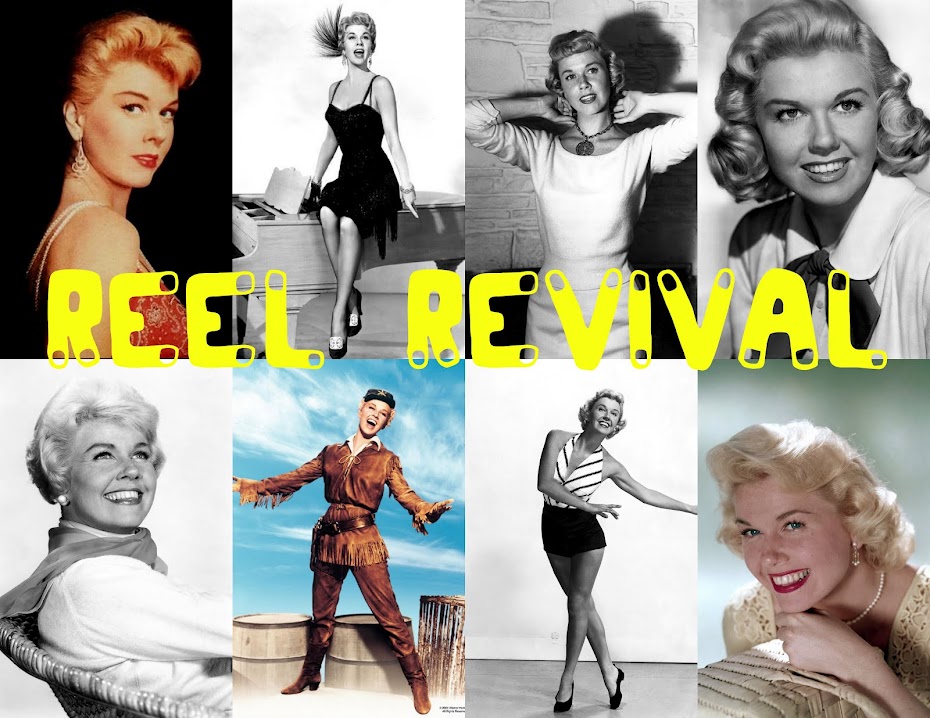I really mean it, so I'll say it again. Our Vines Have Tender Grapes may be the best film that was ever made.
I use the word "may" because I recognize that no consensus has ever been or will ever be reached on any matter of this sort, but I believe that the people who have seen the movie (not many) would be able to agree on its greatness. It is truly remarkable.
Imagine, if you will, a step away from the computer generated effects, a pause from the deep rumbling of sound effects, a break from fantasy and imagination and busyness and clatter. What would it be like to view a film that very simply, beautifully, peacefully, enchantingly, but realistically told a story? What if that story were about characters so genuine, so human, and so sympathetic that you could relate to them better than to your neighbors? And if that story packed a punch so strong that it took you by the collar and held your rapt attention in its commanding grip for a full 105 minutes, at four years old?... That film would be Our Vines Have Tender Grapes.
Why? Because this film is the definitive masterpiece of filmmaking at its finest. Filmmaking, at its essence, is the art of telling stories; it is the simple act of committing to a reel of film (digitally these days) a story. Storytelling is the art of telling a story, and "story" has been defined as "a narrative, either true or fictitious, in prose or verse, designed to interest, amuse, or instruct the hearer or reader; tale." I can't think of any story that has been more successful at interesting, amusing, and instructing the viewer than this film. It is the triple threat of filmmaking. And the key to its greatness is simply this: its moral instruction.
 |
| Edward G. Robinson with "daughter"Margaret O'Brien and "nephew" Jackie"Butch" Jenkins |
The beautiful and morally exceptional thing about this is that it is up to you, the viewer, to grasp them. You are not being hit over the head with them; there are no significant pauses or "looks exchanged." The act of moral instruction is only valuable when the one being instructed is an active participant in gleaning the teachings, and if you are engaged while watching this movie, you will be surprised how much is packed into it.
"A wise man will hear, and will increase learning; and a man of understanding shall attain unto wise counsels." - Proverbs 1:5
Incomparable acting, pretty scenery, entertaining and comedic moments, timeless lessons and truths. Our Vines Have Tender Grapes.
The Basics
Directed by Roy Rowland and based on the novel by George Victor Martin (many, many thanks go to him), this 1945 release stars Edward G. Robinson (famous for his gangster roles but unmatched in this tender performance), Margaret O'Brien (the world's best child star), Agnes Moorehead (later Endora of Bewitched), Jackie "Butch" Jenkins (the typical boy), James Craig, and Francis Gifford. Produced by MGM in black and white at 105 minutes running time.
The Plot
Martinius and Bruna Jacobson (Robinson and Moorehead) are raising their daughter, Selma (O'Brien) in the Norwegian community of rural Wisconsin. She and her cousin, Arnold (Jenkins), learn life's lessons and share life's joys throughout the summer, fall, winter, and spring of 1944-1945 in the small town of Benson Junction.
 |
| Martinius and Selma spend quality time together over a game of checkers. |
Arnold is too young for school and is lost when his principal playmate and cousin, Selma, begins the first grade.
The editor of the local paper sees it as his duty to enlist. A young school teacher from the big city learns to love the virtues of the small town.
The community learns the meaning of true generosity and pours out blessings on an unfortunate neighbor. And it is all to do with Selma, the little girl with a heart of gold and a stubborn streak who learns wisdom from her pa and increases in understanding under his guidance.
It is a sight to behold.
